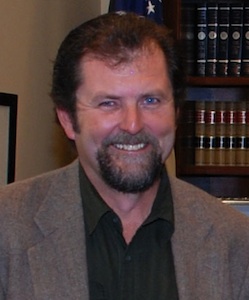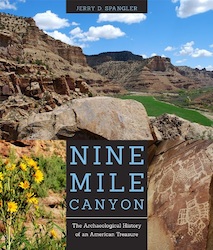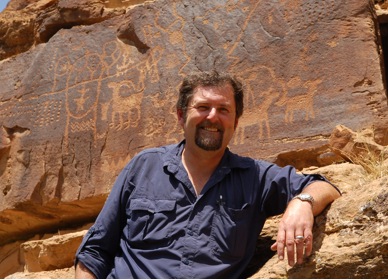 In his presentation titled Nine Mile Canyon: The Archaeological History of an American Treasure, Jerry D. Spangler will discuss various interesting and little-known historical anecdotes related to the first 100 years of archaeological history of Utah, all of which are offered in his just-published book (University of Utah Press).
In his presentation titled Nine Mile Canyon: The Archaeological History of an American Treasure, Jerry D. Spangler will discuss various interesting and little-known historical anecdotes related to the first 100 years of archaeological history of Utah, all of which are offered in his just-published book (University of Utah Press).
Particularly relevant to folks living in the Torrey area will be the discussion of Noel Morss, who excavated at Fish Creek Cove in 1928. Fish Creek Cove became the site type for the Fremont Culture. Morss was not an archaeologist, but his excavations, conducted with the assistance of local Wayne County residents, were respected enough that his monograph preempted reports by other archaeologists working in Utah at the time.
The multimedia presentation contains photographs including Morss’ 1928 excavations at Fish Creek Cove.
Biography
Jerry D. Spangler is the executive director of the Colorado Plateau Archaeological Alliance. Spangler is a professional archaeologist with more than two decades of archaeological research and consulting experience in Utah, western Colorado and northern Arizona, both as executive director of the non-profit Colorado Plateau Archaeological Alliance and owner/principle investigator of Uinta Research, a for-profit entity that specializes in cultural clearances mandated by state and federal law. He is a recognized expert on prehistoric ancestral peoples of the northern Colorado Plateau, having published widely in peer-reviewed journals, monographs and award-winning books. He is currently the leading authority on the archaeology of eastern Utah. His book “Nine Mile Canyon: The Archaeological History of an American Treasure” was published by the university of Utah Press in spring of 2013.
Spangler holds a master’s degree in anthropology from Brigham Young University, and is a member of the Society for American Archaeology, the Register of Professional Archaeologists and the Utah Professional Archaeological Council. He has worked with a variety of public and private entities during his career, including the Utah Museum of Natural History, the Utah Division of State History, the Peabody Museum at Harvard University, the Bureau of Land Management, the Bill Barrett Corporation (Denver) and Hunt Oil (Dallas). He holds archaeological permits from the state of Utah and the U.S. Department of Interior. He has also written extensively on environmental and government issues, developing unique perspectives to problem-solving and public outreach, and he frequently briefs state lawmakers and members of Congress on archaeological issues.


